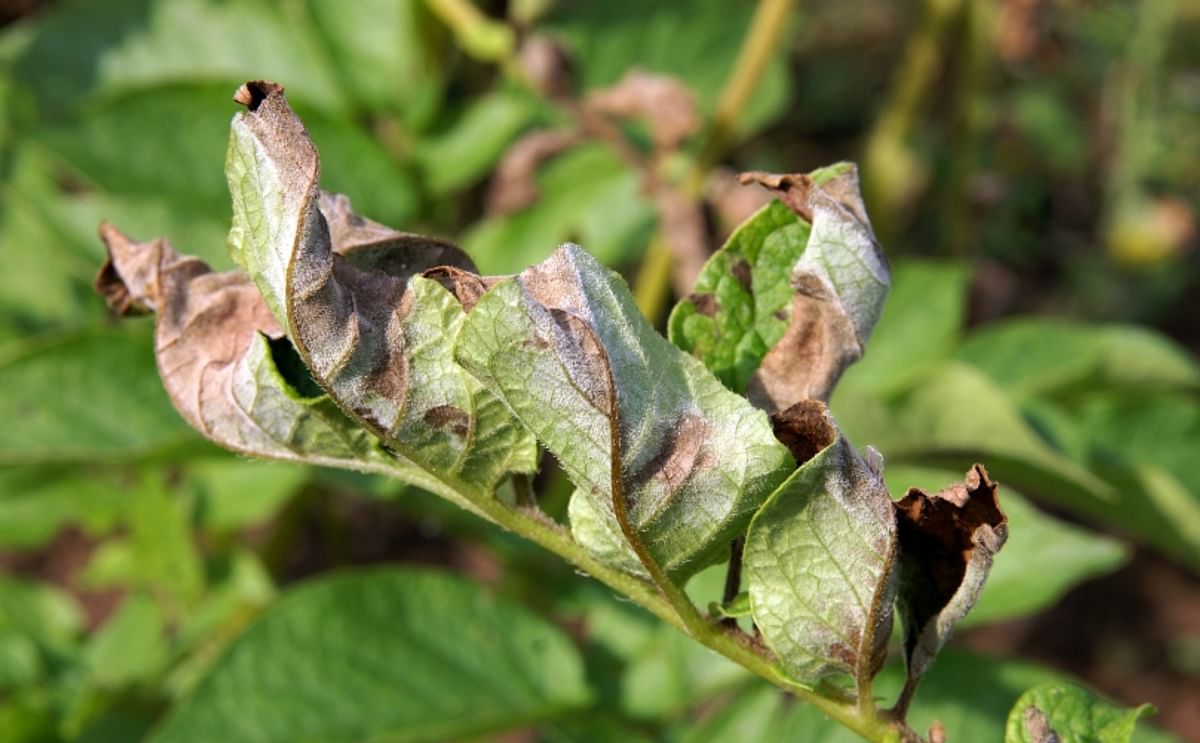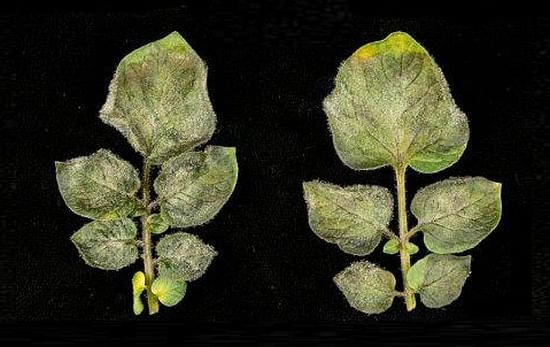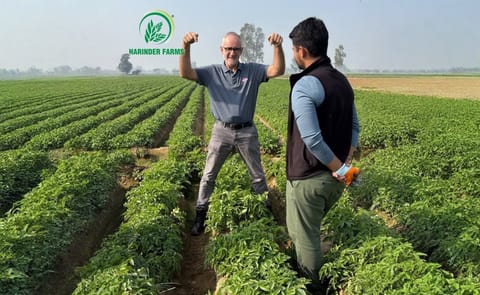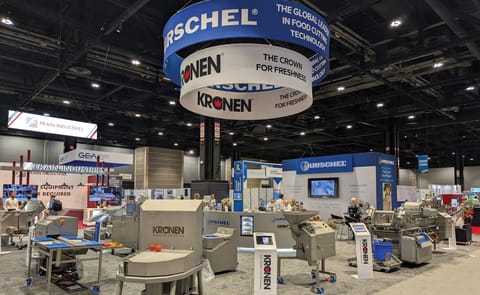Close up of a potato leaf affected by phytophthora infestans (Courtesy: The Sainsbury Laboratory)
New technique accelerates isolation of late blight resistance genes from a wild potato relative

A team of scientists from The Sainsbury Laboratory (TSL) and The Genome Analysis Centre (TGAC) have developed a new method to accelerate isolation of plant disease resistance genes.
The team have also identified a brand new source of blight resistance genes in Solanum americanum, a wild relative of the potato.
Plant pathogens such as late blight can evolve rapidly to overcome resistance genes, so scientists are constantly on the hunt for new resistance genes.
Professor Jonathan Jones and colleagues from his lab at TSL pioneered the new technique, called “SMRT RenSeq”, and believe it will significantly reduce the time it takes to define new resistance genes.

Professor Jonathan Jones (Courtesy: The Sainsbury Laboratory)
Potato late blight remains a major threat to potato and tomato production, with world-wide crop losses estimated to be in excess of £3.5 billion. Prevention measures and crop losses cost UK potato farmers around £55 million a year, and on farm blight management can account for as much as half of the total cost of potato production.
Managing the disease requires frequent application of fungicides, which incurs not only a significant economic cost but also environmental costs. Genetic resistance can be introduced into crop species, which reduces the need for chemical spraying. However, using conventional breeding techniques, deploying genetic resistance is long and laborious.

Several candidates were introduced into a model species, of which one (Rpi-amr3) successfully provided broad-spectrum blight resistance.
Rpi-amr3, with Resistance (Courtesy: The Sainsbury Laboratory)

Several candidates were introduced into a model species, of which one (Rpi-amr3) successfully provided broad-spectrum blight resistance.
35S::Rpi-amr3a, without resistance (Courtesy: The Sainsbury Laboratory)
SMRT RenSeq explained
SMRT RenSeq makes the process of finding, defining and introducing genetic resistance far quicker and easier by combining two sequencing techniques: ‘RenSeq’ (Resistance gene ENrichment SEQuencing) and ‘SMRT’ ( Single-Molecule Real Time sequencing).The technique consists of two main steps:
- A sub-set of DNA sequences are “captured” using a method that selects for long DNA molecules that carry a sequence that is commonly associated with resistance genes.
- These DNA molecules are sequenced multiple times to make sure the code is determined as accurately as possible using the novel long-read SMRT technology.
Professor Jonathan Jones:
“Engineering disease resistance genes into crops is a continuous battle to stay one step ahead of new strains of disease, and scientists are constantly investigating how to speed up this process. .”Dr Matt Clark, TGAC Project lead and Plant & Microbial Genomics Group Leader at TGAC:
“This new technique significantly reduces the time and cost of isolating candidate resistance genes, and has great potential for application to other desirable traits in potato and in other crops.”
“Our cultivated potatoes and tomatoes are highly susceptible to potato blight, as thousands of years of selective breeding has brought with it a huge loss in genetic variation. However, within closely-related wild species, it is possible to find natural resistance to such pathogens.”This work was funded by the Biotechnology and Biological Sciences Research Council (BBSRC) and the Gatsby Charitable Foundation.
“Finding and using disease resistance genes from closely related plants is critical in the arms race against crop pathogens. This technique accelerates the process and we hope will help reduce crop losses to disease.”
Read scientific publication in Nature
Full access requires payment
Kamil Witek, Florian Jupe, Agnieszka I Witek, David Baker, Matthew D Clark, Jonathan D G Jones. Accelerated cloning of a potato late blight–resistance gene using RenSeq and SMRT sequencing. Nature Biotechnology, 2016; DOI: 10.1038/nbt.3540









